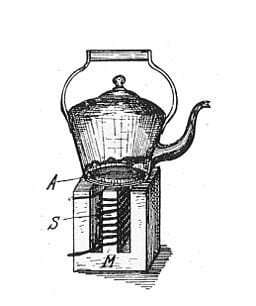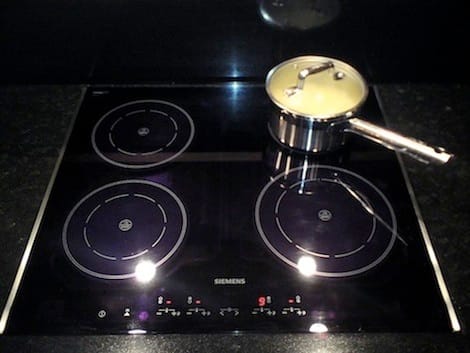Induction Cooktops Are the Future
All of the benefits of electric and gas rangetops with none of the hassle.
 Credit:
Credit:
Products are chosen independently by our editors. Purchases made through our links may earn us a commission.

Imagine a smooth, flameless rangetop that can boil water in as little as 90 seconds. It can simmer sauces more gently, sear at hotter temps, and go from a rolling boil to a standstill in the blink of an eye. You can even put a paper towel between the range and the pot while water boils, and it won't catch on fire. Sound like some future magic nonsense? It's real, and it's called an induction cooker.
First patented more than 100 years ago, induction cookers work through the power of magnets (so OK, it is actually kind of magical). In a nutshell, a magnetic field created by the cooktop can causes a magnetic pot to generate heat and cook its contents. It seems too good to be true—why would it have taken a century to start catching on otherwise? But this is really awesome technology, and it deserves to be in more kitchens everywhere. Here's why.
Why Induction Cooking Is Awesome and Should Be Everywhere
• Speed Induction cookers heat up much quicker than gas or electric. Water usually boils in half the time it would on the best electric or gas ranges. It's almost shocking, and you might even need to adjust some of your cooking habits—chop that onion before you start browning the beef, otherwise you'll up with burnt food. Induction cookers will almost always speed up your cooking times.
• Control Serious chefs demand more than sheer boiling power—for precise cooking, a lighter touch is needed. To get this level of control, many home chefs choose gas over electric. But with gas cooking, the poor temperature ranges of non-professional burners can lead to frustration. Induction cookers are the best of both worlds, offering both a wider temperature range than electric cooktops (lower lows, higher highs) and more responsive temperature control than a gas range, enough to stop a boil-over dead in its tracks.
• Safety
• Efficiency Induction cookers are about 84% efficient, according to government estimates—that's more than gas ranges (38%) or electric ranges (73%). But those figures come with a few caveats and some hemming and hawing. If your electricity comes from wind, solar, or hydroelectric sources, then congrats, your induction (or electric) range is probably greener than gas. But in many areas, gas actually leaves less of a footprint on the earth and your wallet than an electric system. That's another topic for another story, but we wanted to make the point that while induction is touted as the most efficient cooking medium, that's often not the case.

A modern version of an induction rangetop.
So Why Doesn't Everybody Own One Already?
• Price
• Power Supply If you already have an electric range, you've had it plugged into a 220V outlet, so you won't need to switch for induction. But if you're switching from gas, you'll need to have an electrician install a higher-voltage outlet. Prices will vary from home to home, but it'll be at least $250 and probably closer to $400—and it's just one more thing to deal with.
• Cookware Induction rangetops only work with magnetic cookware. You probably already have plenty of pots and pans that fit the bill—just try sticking a magnet to the bottom to find out. But it's likely that you have some non-ferrous cookware too, with bases made of copper, aluminum, or non-magnetic stainless steel. And like smooth electric cooktops, pots and pans need to have flat bottoms; no woks. Shopping for more stuff can be fun. Re-shopping for stuff you already own is less fun.
Alright, so there are some added costs and general annoyances if you want to make the switch to induction (remodeling a kitchen is expensive and frustrating, too—just saying). But those inconveniences haven't stopped adoption in Europe and Asia. Some older cities on those continents have ordinances against open flames, which is an added incentive to opt for induction cookers. But it's still baffling as to why fewer than 5% of American homes use this tech.
There is a way to try out the tech before committing to an entire range. Countertop units go for about $60, providing an easy way to test the waters—and add an extra burner to your kitchen. We may be cautious in the US, but we're not stupid. We know a good system when we see one, and induction should start to enter the conversation alongside gas and electric over the next year or two, and find its way into homes across the country.
Photos: BoschAppliances via Flickr; Grillo, Wikimedia Commons [GFDL, CC-BY-SA]; Olivier Tétard, Wikimedia Commons [GFDL, CC-BY-SA]
